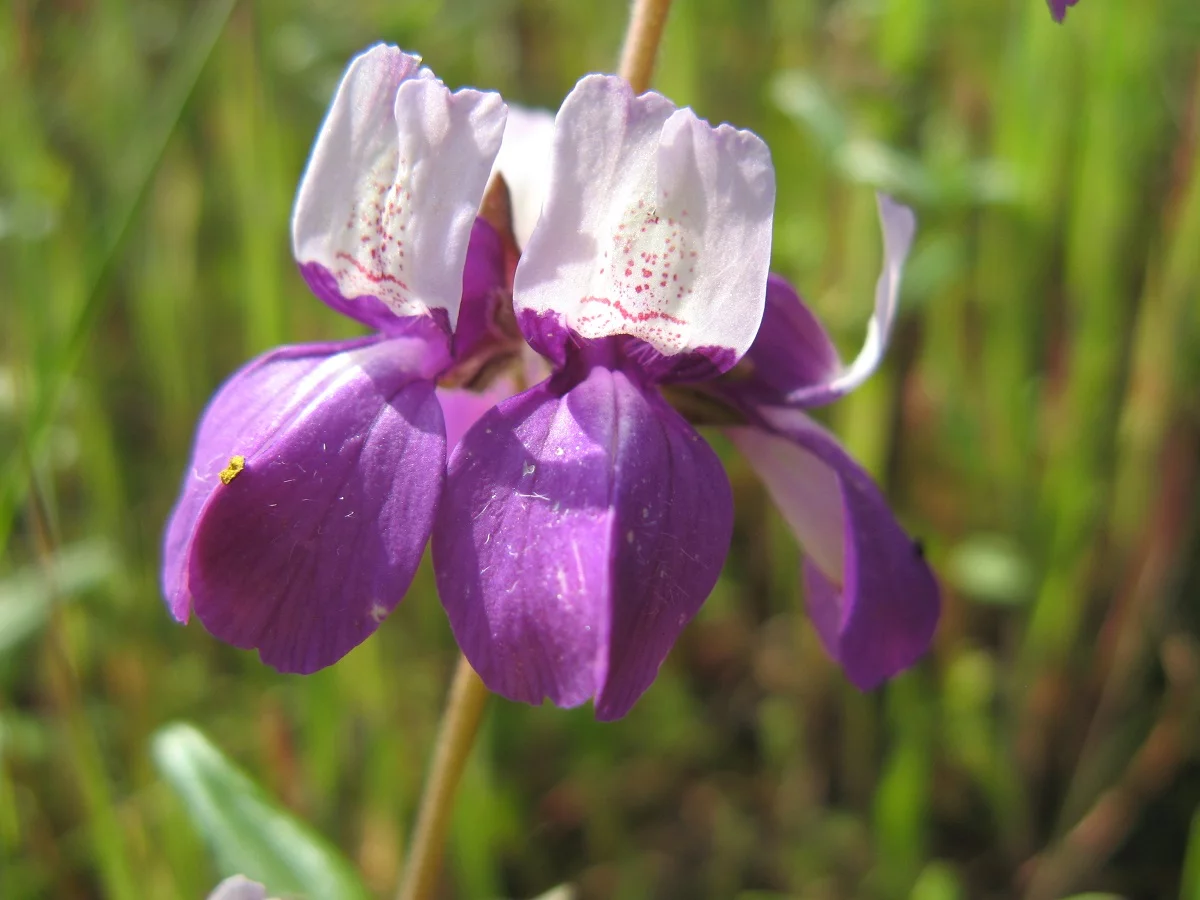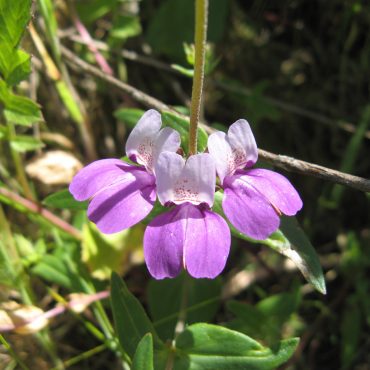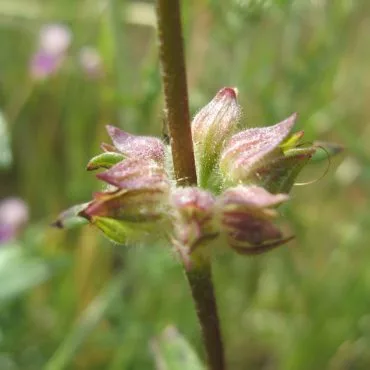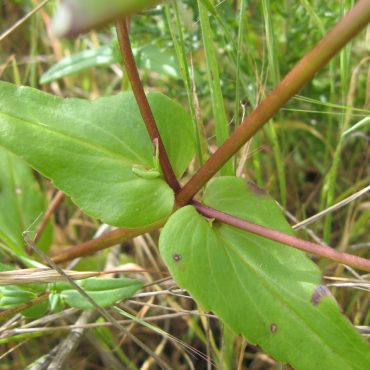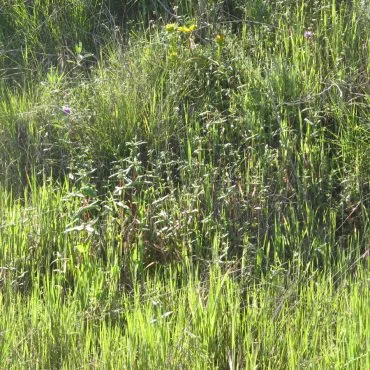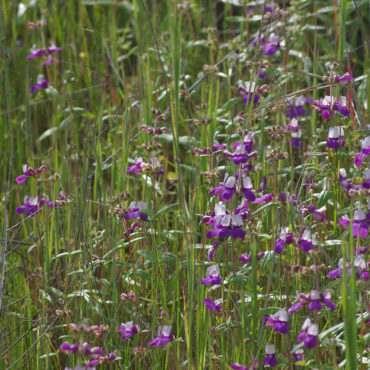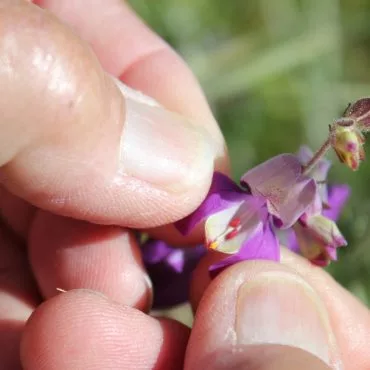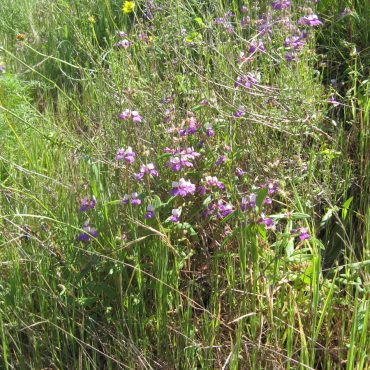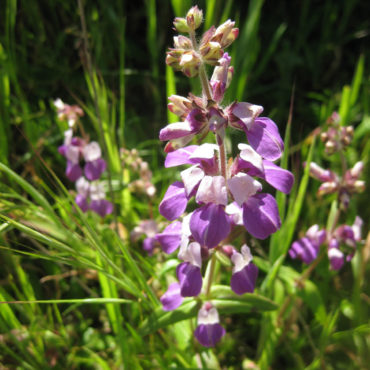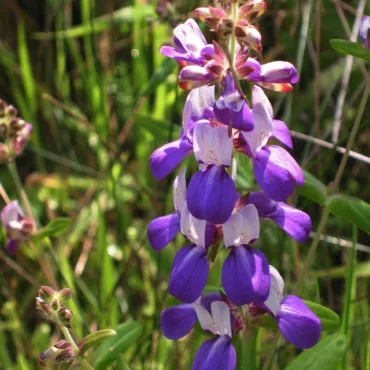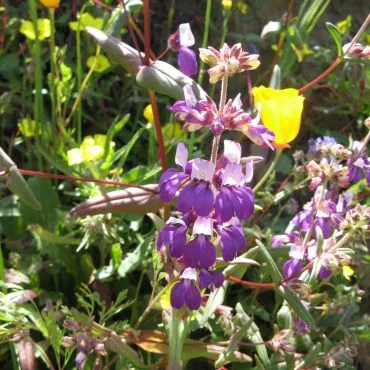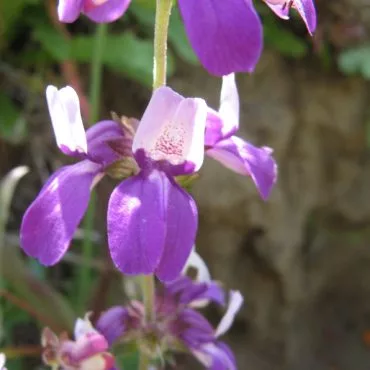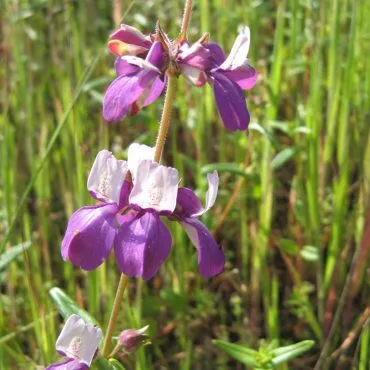Classification
2,59,84,88
Chinese houses are dicot angiosperms in the plantain family, the Plantaginacea. For many years, they were considered members of the figwort family (Scrophulariaceae) but were moved to the plantain family in 1998 on the basis of DNA sequencing. Many available references still present the earlier classification system.
The Plantaginaceae contains nearly 100 genera. Unfortunately for the field botanist, members are morphologically heterogeneous and are not recognized by a few obvious, universal characteristics. The family contains some well-known garden flowers such as snapdragons, foxgloves, and penstemons as well as plantains many of which are obnoxious weeds (not to be confused with the banana of the same name).
The genus, Collinsia, contains approximately 20 species, 17 of which are found in California.7 Species of this genus are characterized by opposite leaves and a folded middle lower petal11 that encloses the reproductive organs. Only one species of Collinsia is found in the Reserve.48
There are two varieties of Chinese houses. Our plants are variety heterophylla, which is the more common and widespread variety.

